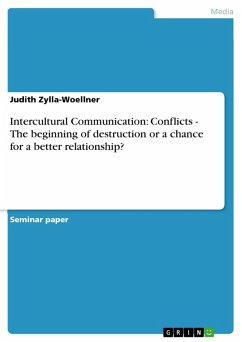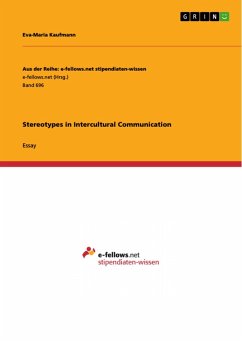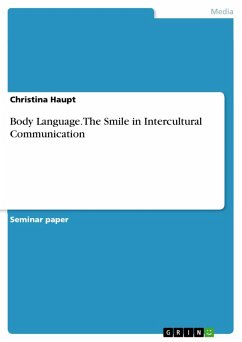Seminar paper from the year 2006 in the subject Communications - Intercultural Communication, grade: 1,5, Lund University (Psychologie), course: Intercultural Communication, language: English, abstract: There is no day passing by, on which the daily news report about fights, terror attacks, political disagreements and religious struggles. The heritage of all these incidents often derive from minor conflicts and misunderstandings but are able to lead to death, sufferings and wars. This caricature was drawn by a Danish artist and caused a huge intercultural conflict. The picture was also published in newspaper all over Europe and caused protests in the Arabic world. $OWKRXJK WKHQHZVSDSHU³-\OODQGs-3RVWHQ¿DSRORJL]HG IRU WKHLQVXOWZRPHQ protested against the publication and mad students burned Danish flags. 7KLVZDVDW\SLFDO LQWHUFXOWXUDOFRQIOLFWEHFDXVHERWKVLGHVGLGQ¶WNQRZPXFKDERXW typical traditions, ideologies and habits of each country. In the Moslem world its not allowed and a death-sin to portray Allah and his prophet Mohammed. Although in non-Moslem countries it is ok to do so, most Moslems felt deep insulted by that action and demanded a punishment for the paper. Another consequence was several bomb threats by anonymous callers. This is just one example on how misunderstandings can lead to problems that involve different parts of the world. The pope caused another case, where he quoted the emperor Manuel II Palaiologos saying that the prophet Mohammed just brought bad and inhuman things, by using the sword to spread his believe. Once again the Moslem world was upset and protesting, even pope-dolls where burned. The pope apologized and said that his uttering was misunderstood. This is just one more incident that caused conflict and harm between cultures and religions. Only one sentence said wrong in front of a specific audience has the power to cause protest and struggle. But conflict could also be considered to be constructive and helping to create a better state of a relationship. Therefore conflicts are not only inevitable, they really are healthy and necessary. Most of the times, the cause of conflicts are just little and almost invisible incidents during our daily communication with others. Although these conflicts are inevitable in our everyday life, they easily can escalate and rise to huge problems. The main explanation for this, are cultural and ethnic differences in how a situation is perceived and handled. This paper is supposed to give a short overview of what a conflict is, which styles of conflicts there are and how to deal with them as well as a brief summary including our personal opinions.
Dieser Download kann aus rechtlichen Gründen nur mit Rechnungsadresse in A, B, BG, CY, CZ, D, DK, EW, E, FIN, F, GR, HR, H, IRL, I, LT, L, LR, M, NL, PL, P, R, S, SLO, SK ausgeliefert werden.









